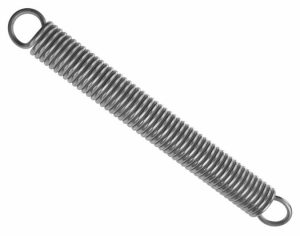
When shopping for an extension spring, you’ll need to choose the right size. Also known as tension springs, extension springs consist of a piece of coiled metal, such as metal or piano wire. They are designed to operate under a tension load. As the load pulls from the side, the extension spring will stretch while becoming longer.
Extension springs are available in different sizes. You’ll need to choose the right size for the load-bearing application with which you intend to use it. Most extension springs feature several measurements. By checking these measurements, you’ll know whether it’s the right size.
Outside Diameter
You should consider the outside diameter when shopping for an extension spring. The outside diameter is exactly what it sounds like: the diameter of an extension spring measured from the outside of the body.
Inside Diameter
Extension springs have an outside diameter, and they have an inside diameter. The inside diameter is smaller than the outside diameter. It represents the diameter of an extension spring measured from the inside of the body.
Wire Diameter
The wire diameter of an extension spring represents the diameter of the wire from which it’s made. Extension springs are made from wire. But the size of their respective wire may vary. Some extension springs are made from thick wire, whereas others are made from thin wire. By checking the wire diameter, you’ll know the size of an extension spring’s wire. The wire diameter is the diameter of the wire.
Body Length
The body length of an extension spring represents the length of its coiled body minus the hooked ends. Most extension springs have an integrated hook or loop on both ends. Using these hooked ends, you can connect extension springs to machines or equipment. The body length doesn’t take into account these hooked ends. It’s simply the length of an extension spring’s coiled body without the hooked ends.
Free Length
The free length of an extension spring represents the total length. It includes the length of the coiled body plus the hooked ends. You can calculate the free length by measuring the entire length of an extension spring, from one end to the other end.
Along with choosing the right size, of course, you should choose the right spring rate. Spring rate is a measurement of how much an extension spring will stretch under a load. It’s expressed in pounds per inch. A spring rate of 0.4 pounds per inch will stretch 1 inch under a 0.4-pound load.
